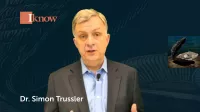Many organizations have become disillusioned with their knowledge management initiatives, despite success at gathering large volumes of well-structured content. What’s often missing is the “insights layer”.
Many organizations have accumulated significant document archives over time, in the thousands or even hundreds of thousands. Many have also installed search tools that can surf this content and extract results for a particular topic.
Despite this, you often hear complaints about knowledge management (KM) in these organizations: “there’s too much to sift through” or “we can't find what we really need”. The problem is only going to get worse as additional documents, together with increasing volumes of unstructured content from external sources and social media get added to the mix.
One solution is to get more selective about what’s captured, focusing on content that truly extends and advances your organization’s core knowledge base – even if you also need to keep a more comprehensive document repository for records management purposes.
But regardless of the scope of these collections, what’s often missing is the “insights layer”: a way of quickly surfacing the key ideas that help with real business issues that people are facing. If we could make it easier to find these pearls of wisdom in a sea of documents, knowledge management would be much more useful.
Building the insights layer is tricky, because you don’t want to over-invest in building highly polished and synthesized topic knowledge that few people will ever use. Three approaches in particular can help keep things lightweight and efficient:
- Structure KM content around use cases. There can be tremendous value in asking a few key questions when uploading documents or project summaries, and then using the answers to label the content; e.g., “what could be useful to other teams”, “what was the impact of this work”, and “what lessons were learned”? This exercise should also help you quickly trim and re-focus the content to make it easier for others to re-use. If you don’t have good answers to the questions, perhaps the content should stay in your archives and not be highlighted for KM purposes.
- Don’t try and capture everything. Think of the content that you upload as advertising for what’s available behind the scenes. After all, a key objective for knowledge management is to encourage direct personal contact between originators and users, so that people can find out about additional resources and how to apply them in specific situations. By doing this, you’re adding a more customized “pull” element to knowledge sharing - and saving effort on unnecessary codification of content that’s better explained in person.
- Create “shop windows” for key knowledge areas. If every item that’s uploaded to repository has a basic set of topic metadata added, together with the key insights and contact people, it makes it relatively quick and easy for topic experts to create and maintain lists of the most useful content for entire areas of knowledge. As an alternative or a supplement, some organizations are successfully using internal crowd-sourcing approaches, combined with usage analysis, to collectively select the content that should be highlighted. However you do it, these lists will become highly valuable starting points for searchers.
None of these tasks should take much extra time if you can build a discipline of doing them as part of the ongoing work for a project or other knowledge-creating activity. If you’ve helped develop the ideas, you’ll already have a good idea of what topics were covered and why they might be useful to others; and you’ll definitely know the right contact people. A small investment of time adding this information pays big dividends later when people are trying to find what they need.
Of course, some of the pearls will fade over time. Insights get outdated or superseded, so there needs to be a mechanism for review and updating. Technology can help by providing usage data and by triggering review workflows after a period of time; and the same approaches you used for highlighting key content will also help with re-ordering and editing it. It’s important to make this extra effort to maintain currency and relevance, or the knowledge platform will gradually lose credibility with users.
Creating a strong insights layer and keeping it fresh are among the most important success factors for KM programs. If you do it right, it will have a big effect on and organizational buy-in and leadership support, and KM will be transformed from a static library to a living resource with real and growing business value.
Learn more. Reach out to Simon Trussler.


